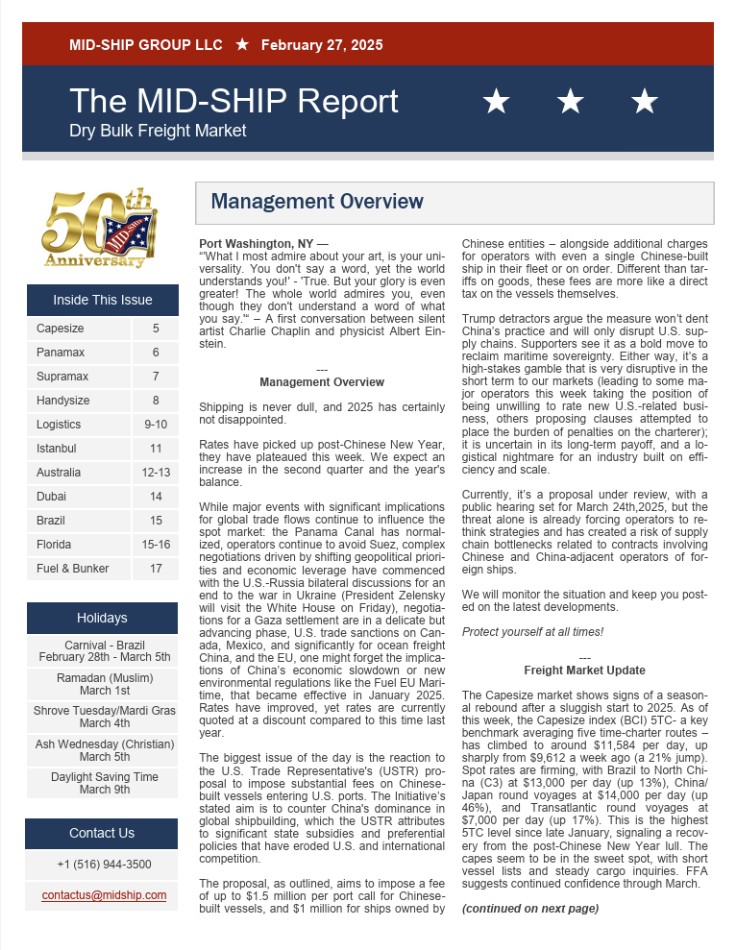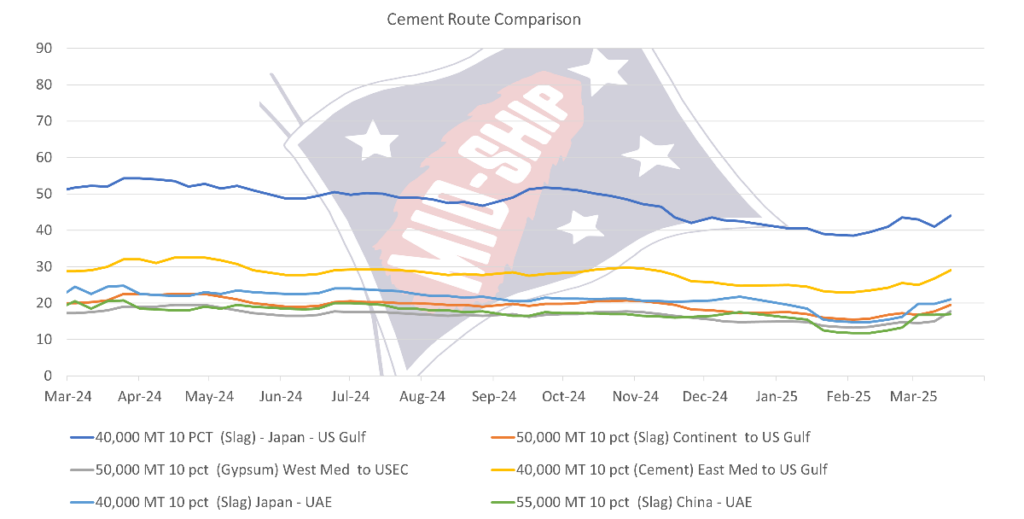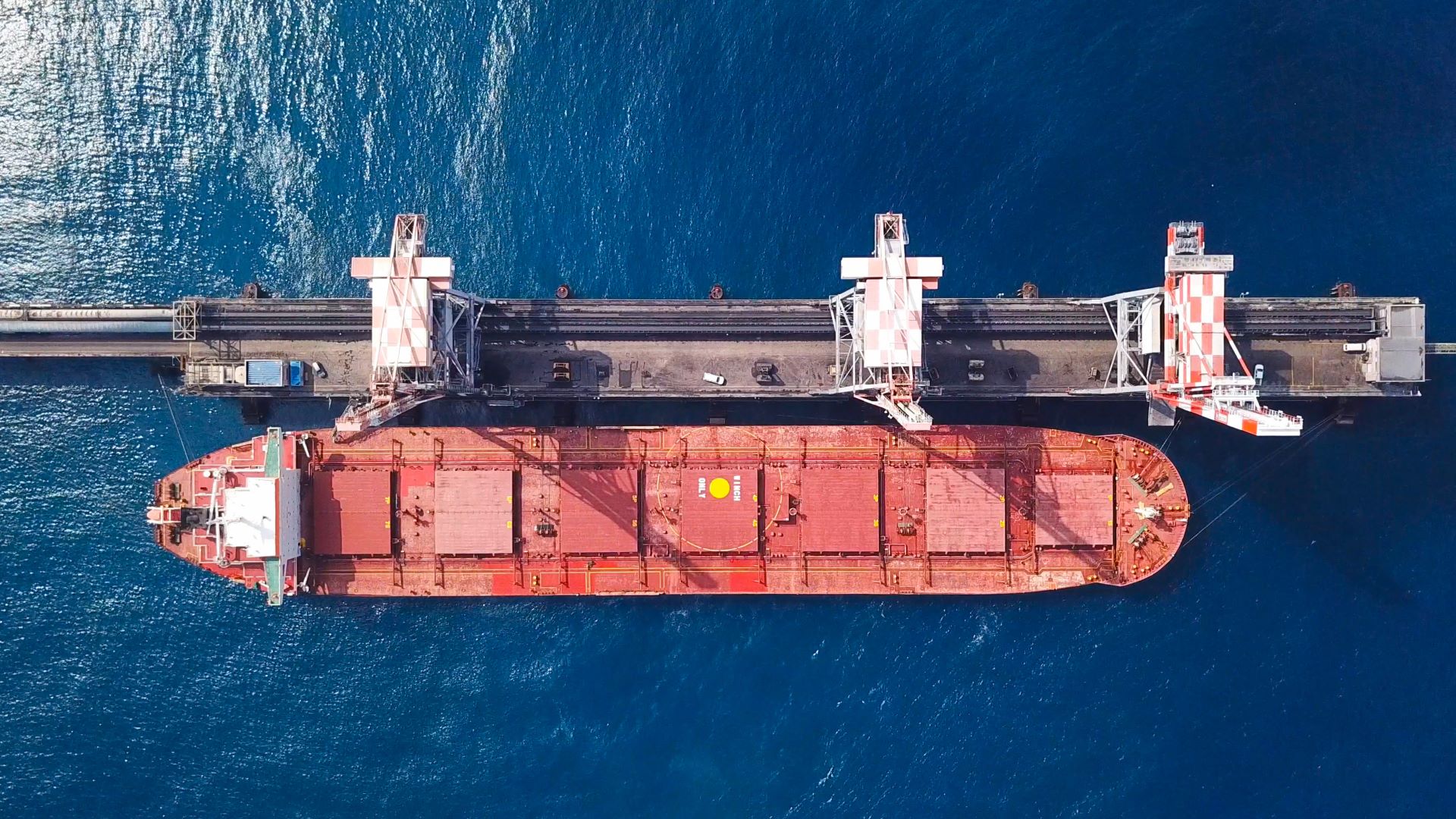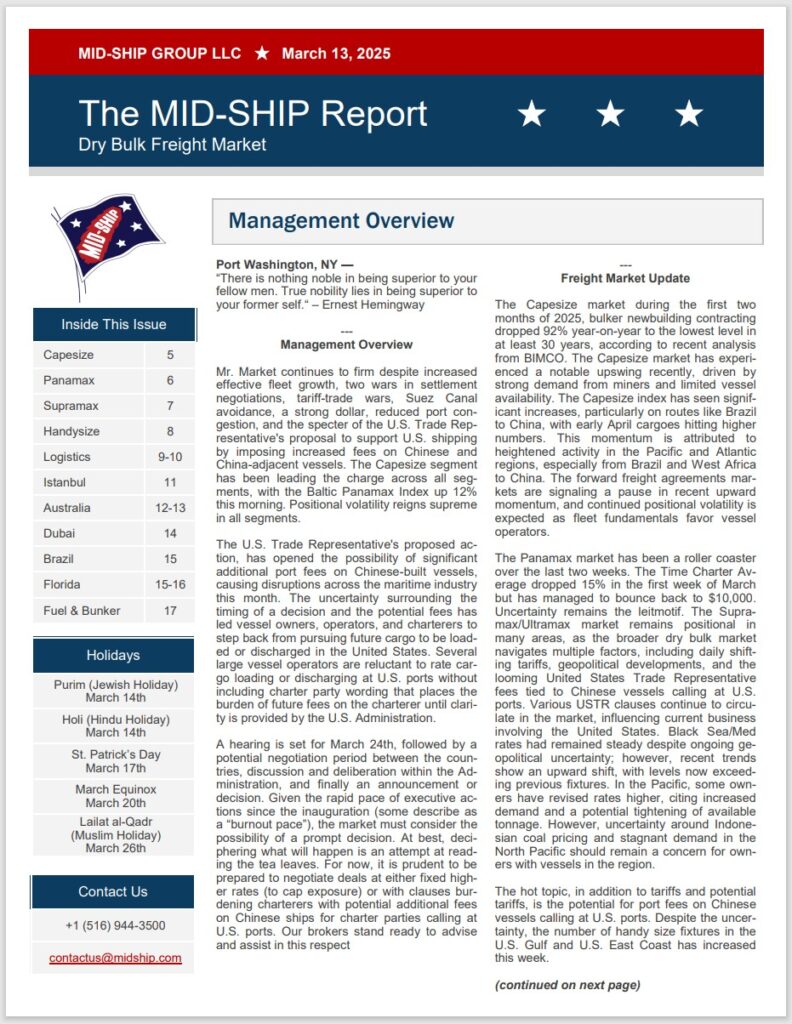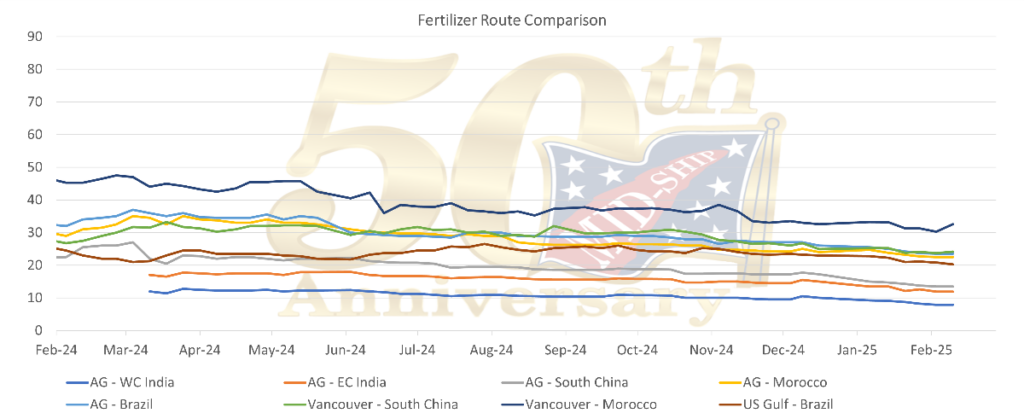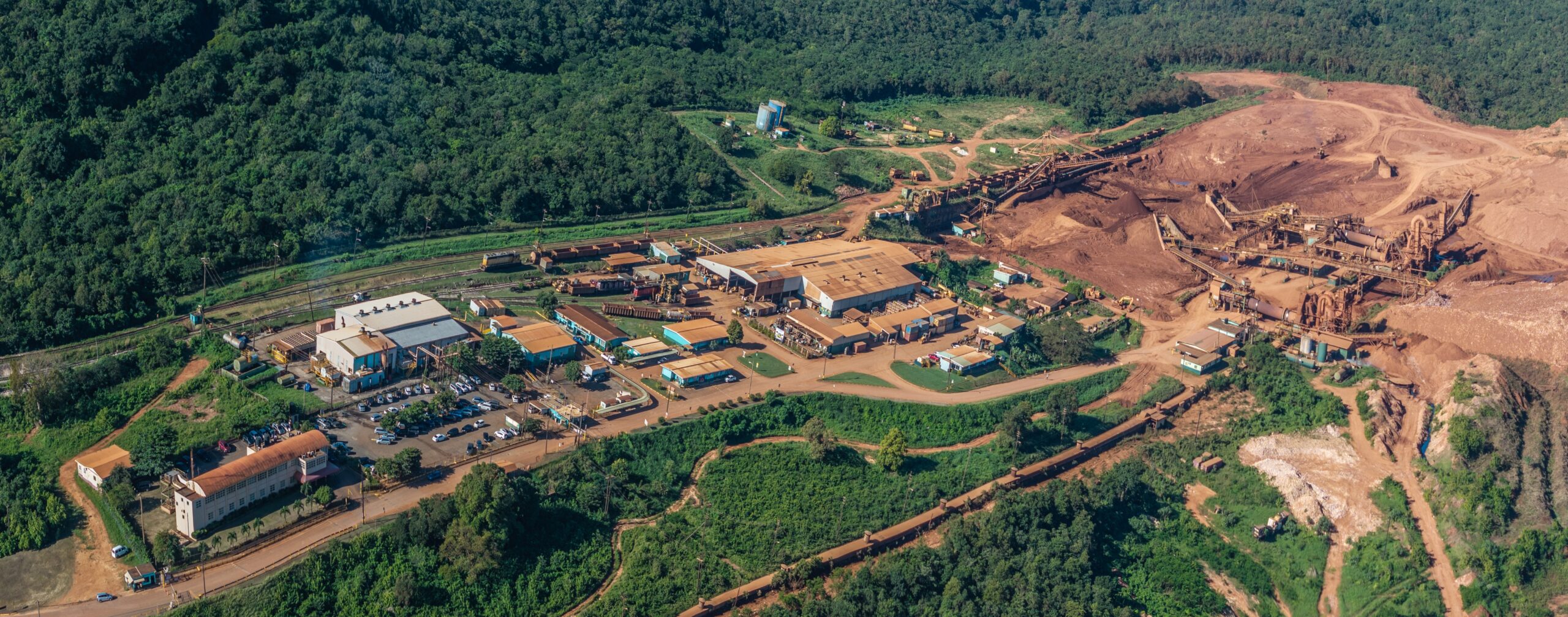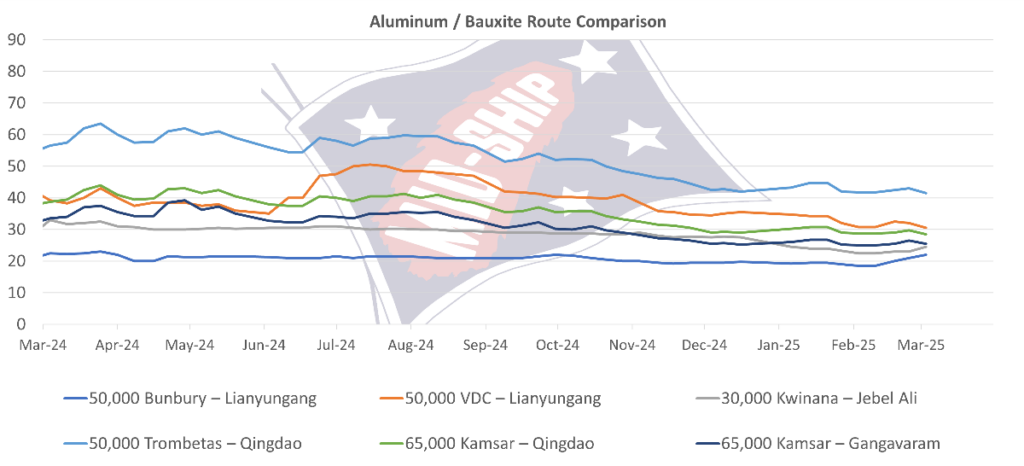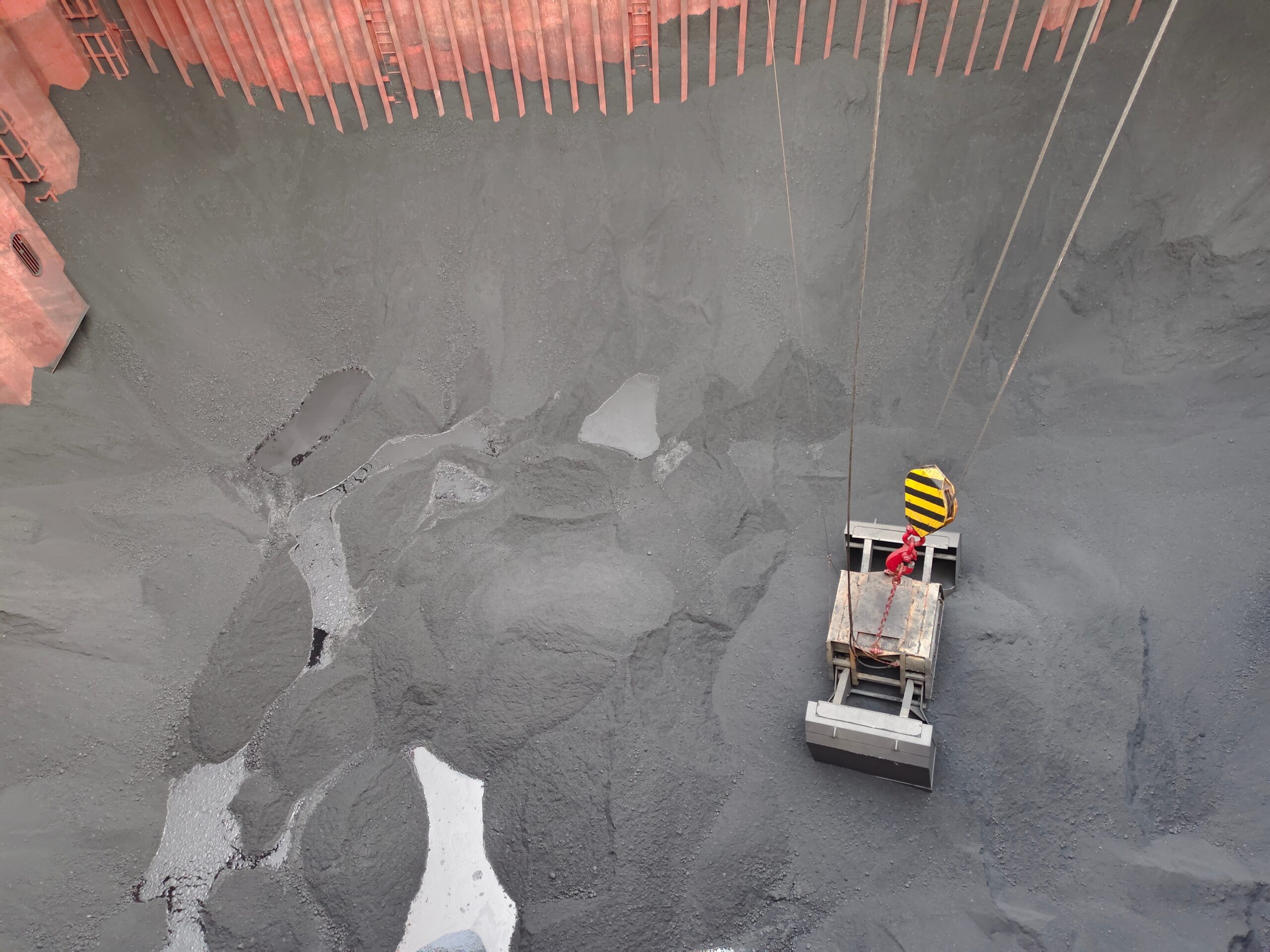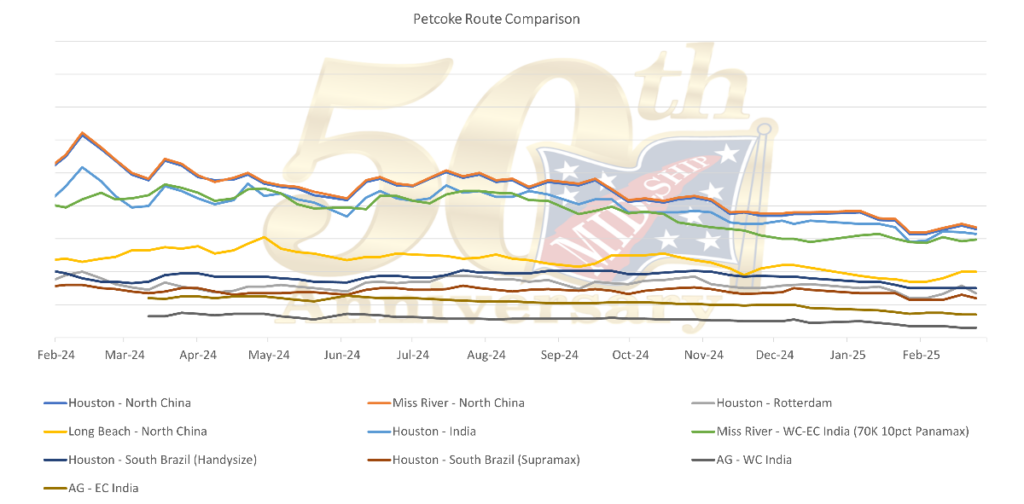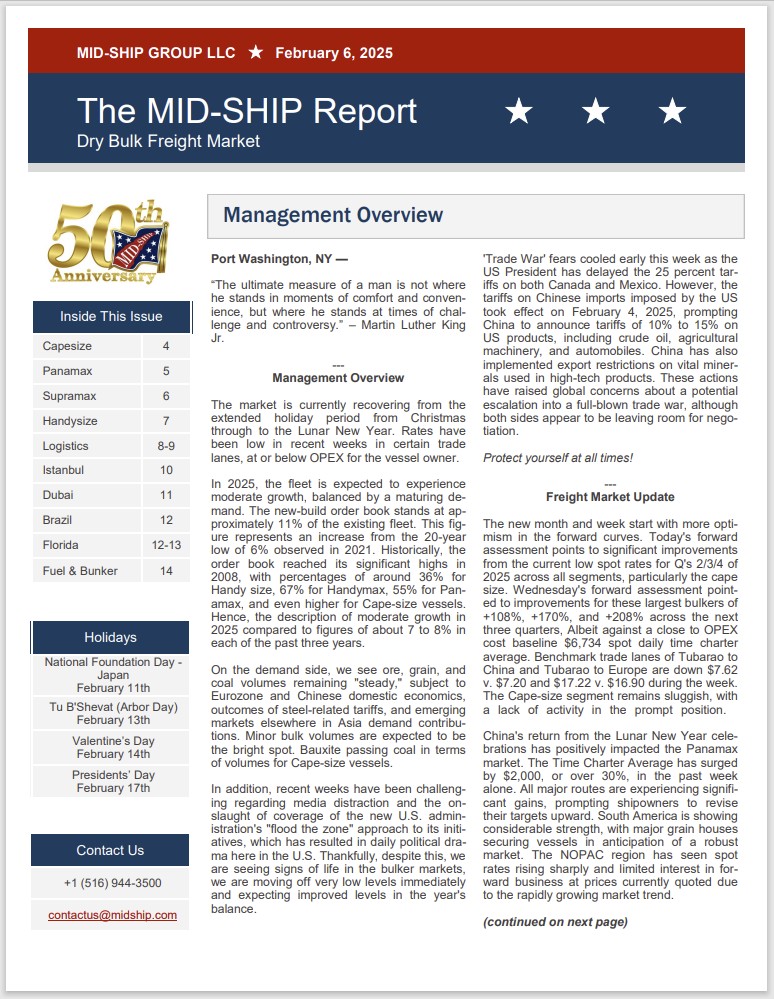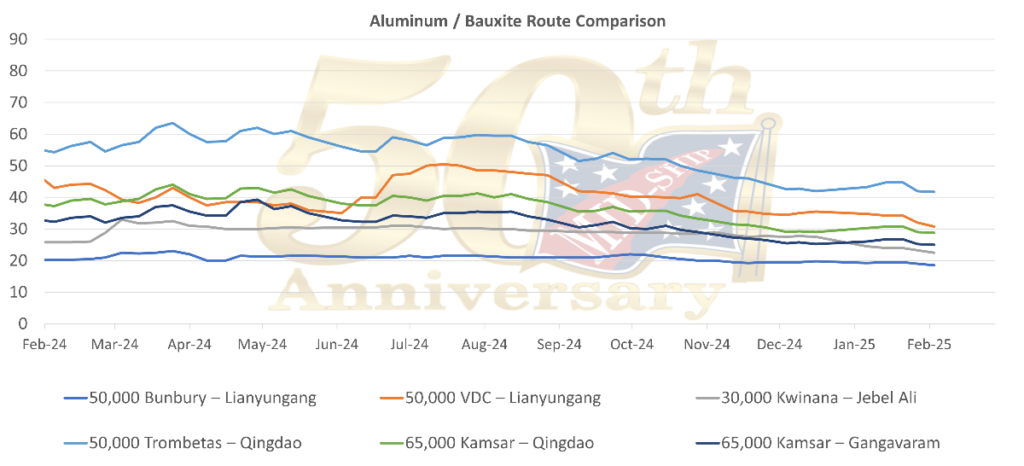February 27, 2025
The Capesize market shows signs of a seasonal rebound after a sluggish start to 2025. As of this week, the Capesize index (BCI) 5TC- a key benchmark averaging five time-charter routes – has climbed to around $11,584 per day, up sharply from $9,612 a week ago (a 21% jump). Spot rates are firming, with Brazil to North China (C3) at $13,000 per day (up 13%), China/Japan round voyages at $14,000 per day (up 46%), and Transatlantic round voyages at $7,000 per day (up 17%). This is the highest 5TC level since late January, signaling a recovery from the post-Chinese New Year lull. The capes seem to be in the sweet spot, with short vessel lists and steady cargo inquiries. FFA suggests continued confidence through March.
The Panamax market increased by 50% overall during the last three weeks, with the Pacific basin playing the lion’s share with a 100% surge, while the Atlantic Ocean is barely at a 10% growth. Australia and Indonesia are the driving forces behind this spectacular come back in the Pacific Ocean, both volume and freight levels have spiked in the last month prompting the ship owners to further raise their expectation and targets.
The Supramax/Ultramax market is showing signs of stabilizing following its sharp decline earlier this month, with rates recovering across multiple regions. The Supramax 11TC average time charter rate has marked over a 50% surge since the beginning of February due to positive market sentiment, tightening vessel supply, and stable demand, leading owners towards cautious optimism. Freight rates are continuing their upward trend across the Atlantic and Pacific. With that said, the USG segment is showing a bit of a mixed outlook, with stable but slightly softening inquiries into the end of last week and the start of this week. The Continent and Mediterranean regions saw slight improvements, reflecting a gradual strengthening in cargo flows.
Over the past three weeks, the handy market has experienced intermittent momentum across both the Atlantic and Pacific regions. However, this week, the U.S. Gulf has seen a decline in demand compared to previous weeks, leading to market stabilization.
In the South Atlantic, the spot market for Handysize vessels has continued its upward trend throughout the latter half of this month. This growth has been driven by a tight supply of vessels and consistent cargo demand, resulting in transatlantic trip rates exceeding the mid-teens per day.
The South Atlantic spot freight market maintained a firm tone, with tight vessel availability supporting rate increases across all segments. In the Capesize sector, activity from Brazil strengthened as the week progressed, pushing the Brazil / China route past $18 per metric ton for March loadings. Increased fixture activity signaled renewed interest from charterers, contributing to a more optimistic market sentiment. The Panamax market saw strong East Coast South America demand, particularly for March stems. This surge in activity aligns with the seasonal Brazil grain season, which is currently in full swing. The South Atlantic remained active in the Ultramax/ Supramax segment, driven by solid grain and mineral demand extending through the first half of March. Transatlantic routes benefited from stronger inquiry levels.
In the South Pacific time, charter rates for Handysize and Supramax vessels have experienced a significant rebound, rising more than 50% from a 20-month low throughout February. For instance, the Baltic Supramax Index for 63,500 DWT vessels operating on an Aussie round trip out of the Far East has increased by USD 4,775 per day over the last two weeks, with current rates hovering around USD 12,500 per day. While these numbers may seem dramatic, they follow a prolonged low period, and what we’re seeing could more accurately be described as a market correction rather than a complete reversal of the underlying fundamentals. Sentiment regarding near-term demand remained relatively stable in February, and futures have slightly adjusted downward in response to the rising time charter rates. Looking ahead to the rest of 2025, expectations suggest a softer market compared to 2024. It’s important to remain cautious, as numerous geopolitical factors could impact the shipping market moving forward.
In the domestic market, despite the uncertainty of tariffs impacting the import steel industry, shipment volumes into the Mississippi River have remained steady during the past 3 months. Many shippers have moved up shipments ahead of the implementation of tariffs, and others are arranging to divert cargoes to alternate (earlier) discharge ports to arrive shipments in the US before the implementation of tariffs on March 12th. We assist many clients with this effort – developing new routes, including new warehousing, coastal barge, truck and/or rail movements.
The USDA reported grain barge freight for St Louis to NOLA was trading near 469 percent of tariff as of the week ending February 18th, 2025, 3% above the past 3-year average for the same week.
The Upper Mississippi river is slated to fully re-open over the next several weeks as lock projects are completed. Transit is expected to resume to St. Paul, MN by mid-March once the guide wall repairs complete on Lock #2, about 25 miles south of the Twin Cities.
The International Longshoremen’s Association (ILA) members have ratified the new six-year agreement with the United States Maritime Alliance (USMX). The agreement, retroactive to October 1st, 2024, will run until September 2030 and provide further protections against automation, a major hurdle in negotiating. Similar to the previous master contract, there is a blanket ban on automation that requires no oversight and a 35% pay increase for new dock workers in the first year. Semi-automated equipment will have at least one worker operating/handling at all times, and there will be a rigid vetting process for implementing said equipment. The contract is expected to be formally signed on March 10th.
Subscribe below to receive the full report.
